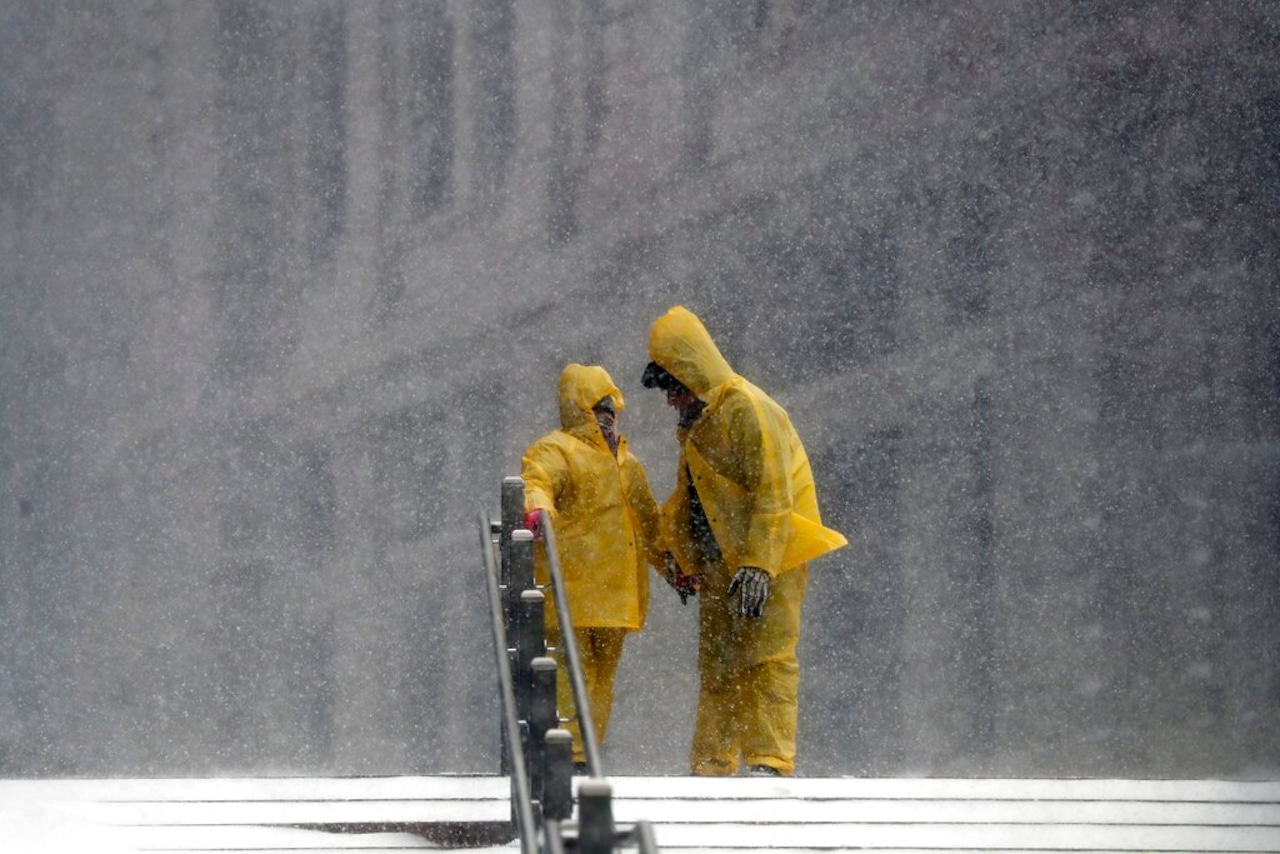Weeks of inaction swiftly turned to chaos for the Red Sox on the final weekend of 2023, with news breaking that the team had not only come to an agreement with starting pitching target Lucas Giolito but also reached a shocking trade to send Chris Sale (and cash) to the Braves for infielder Vaughn Grissom. In a matter of 24 hours, chief baseball officer Craig Breslow plugged one hole in his starting rotation, opened another and filled the second base position with the right-handed hitting hitter he was hoping for.
The Red Sox, barring an unforeseen six-week stretch of apathy before pitchers and catchers report, are not done remaking their roster for 2024. The changes so far have been significant, with Giolito, Grissom, Tyler O’Neill and a handful of depth arms added, Sale and Alex Verdugo gone and Justin Turner, James Paxton and Adam Duvall potentially leaving in free agency. All signs, though, point to the Red Sox adding more pieces before Opening Day.
To do so, however, more subtraction may come first. According to a baseball source, the Red Sox have told at least one free agent target that they need to shed more payroll before pursuing him as aggressively as they want to. It’s no coincidence, then that the Sox shaved nearly $4 million in salary by swapping Verdugo (projected to earn $9.2 million in arbitration) for O’Neill (projected $5.5 million) and $8.6 million more (based on CBT calculations) by moving on from Sale. The bigger question is why the team is being so fine when it comes to finances when current projections have them around $200 million in committed money, well under the first competitive balance tax threshold of $237 million.
Breslow’s budget for 2024 remains unclear, at least publicly. But recent history shows that the first CBT threshold, where penalties start coming into play, isn’t necessary ownership’s guiding light. According to baseball sources, the front office went into last winter with a mandated budget of $225 million, which was significantly under the first CBT threshold of $233 million. Boston did not come close to paying the luxury tax in 2023, when the club finished last; estimations had Boston’s payroll just a hair over that $225 million mark by the end of the year.
The Red Sox still have holes but in their messaging to agents, appear to be looking to move some money before aggressively plugging them. In that vein, one obvious trade candidate is closer Kenley Jansen, who is owed $16 million in the final year of his two-year, $32 million contract in 2024. There are some in the organization who believe the loss of Jansen, who saved 29 games in 2023, could be easily remedied. Chris Martin or Tanner Houck could shift to the closer role with other late-inning options (John Schreiber? Josh Winckowski?) taking on more important roles if Jansen is dealt.
Breslow, then, faces a challenge of adding and subtracting simultaneously. He has done that so far this winter with the moves he has made, though they don’t necessarily match the “full throttle” promise chairman Tom Werner gave the public at the outset of the winter.
On Saturday night, Breslow said he’s comfortable with the team he has assembled but acknowledged that there are still areas that could be improved. Rotation help, Breslow acknowledged, remains the priority. Behind Brayan Bello and Giolito, who are locks, there are plenty of question marks in Boston’s Sale-less rotation. Kutter Crawford, Nick Pivetta, Garrett Whitlock, Houck and even Winckowski remain as internal candidates for rotation spots but are not guaranteed to start.
“I would still put starting pitching at the top (of our list),” said Breslow, who couldn’t acknowledge the Giolito deal, which remains unofficial, “but I didn’t want to be paralyzed by becoming singularly focused on starting pitching and we let an opportunity to improve the longer term outlook for the team pass us by. With that said, I think we can continue to to scour the starting pitching market, both in free agency and through trade.
“We have a number of guys who have positioned themselves for strong consideration in the rotation based on performance last year,” he added. “I think the ideal situation is to amass as much depth as possible and have guys compete for rotation spots. We have a number of successful pitchers who have been successful in the big leagues that we’re going to stretch out to fill starting roles and we’ll let them kind of battle it out. There’s always the possibility that there are external additions as well.”
The free agent market still boasts plenty of options for teams looking for starters, including two front-line options in Jordan Montgomery and Blake Snell and a bevy of other options like Shōta Imanaga, Marcus Stroman, Yariel Rodriguez, Mike Clevinger, Michael Lorenzen, Sean Manaea, James Paxton and Hyun Jin Ryu. The industry does not view the Red Sox as frontrunners to sign either Montgomery or Snell, though, meaning cheaper options like Clevinger, Lorenzon, Paxton or Ryu might be better fits, especially after the $19 million commitment to Giolito. The trade market remains a potential, if not more likely, avenue through which Breslow could make a sizable upgrade.
The Red Sox are unlikely to be major players for rentals like Cleveland’s Shane Bieber and Milwaukee’s Corbin Burnes or even White Sox righty Dylan Cease, who is two years away from free agency. The goal, then, will be to add a young, controllable starting pitcher — a piece one source recently described as the organization’s “white whale” in recent years. The organization’s reticence to discuss top prospects Marcelo Mayer, Roman Anthony and Kyle Teel in such trade proposals has made it nearly impossible to make significant headway in the past.
The Sale deal impacts the Sox’ search for rotation help in a trio of ways. First, it takes Sale, who was being counted on to contribute at a high level when healthy, out of the equation, therefore creating another hole. Secondly, it frees up some money — again calculated to be $8.6 million against the all-important CBT threshold in 2024 — for further additions. For a team that seems concerned about spending — and the industry perception is that they clearly are — that’s not insignificant. Lastly, the addition of Grissom means the Red Sox have an even deeper group of young, projectable position players, which was already considered an organizational strength. Adding Grissom to a group that includes Mayer, Anthony, Teel, Triston Casas, Jarren Duran, Wilyer Abreu, Ceddanne Rafaela, Nick Yorke, Enmanuel Valdez and others, would only seem to increase the chances that Breslow can put together an intriguing package for a controllable starter.
Teams like the Mariners (who have George Kirby, Logan Gilbert, Bryan Woo and Bryce Miller) and Marlins (Jesus Luzardo, Edward Cabrera, Braxton Garrett and Trevor Rogers) are going to ask for the moon for those players. Maybe adding Grissom to the middle infield mix makes dealing Mayer more palatable for Breslow. Or maybe not. On Saturday, he once again conceded that a move for a young starter would be pricy.
“I’ve yet to meet the team that has too many middle of the infield strong offensive players,” he said. “That’s a challenge. That’s a problem that we would welcome and we would love to have. But certainly, in order to in order to acquire controllable young starting pitching, we have to be willing to make difficult decisions and decisions that hurt. Today’s was one of them. But the way that you can mitigate those losses is to continue to acquire not just depth but real quality.”
The Red Sox have shopped their young outfielders to other clubs in trade talks, as Alex Speier of The Boston Globe, and one source indicated that the club may be willing to deal multiple outfielders in the right situation. Duran, Abreu and Rafaela stand out as the obvious trade candidates as controllable, upside plays with major league experience. At present, the Red Sox have a crowded outfield mix with those three, O’Neill, Masataka Yoshida and Rob Refsnyder on the 40-man roster and Anthony likely knocking for an opportunity in the coming years.
Boston remains engaged on free agent Teoscar Hernández, and moving an outfielder or two for a controllable starter would open the door for that signing (or another outfield addition). The club is intrigued by the idea of putting Hernández, who has a long track record of success at Fenway Park, between lefty hitters Rafael Devers and Triston Casas in its lineup for the coming years. It’s also possible that, if Boston has trouble shedding salary elsewhere, that Breslow could turn to lesser position player additions to fill that area of his roster.
“I had been pretty vocal that the clearest path to do that was with via starting rotation upgrades,” Breslow said Saturday. “That doesn’t mean that it’s the only path.”
Though the rotation is a clear priority, the Red Sox have been active in other areas of the free agent market in recent weeks. They checked in on Amed Rosario before acquiring Grissom, though Saturday’s trade recently ruled them out. And they’ve had at least preliminary contact, per sources, on two of the best available relievers — righties Robert Stephenson and Jordan Hicks — which makes sense if Jansen or another reliever is on the block. Obviously, finances will dictate how aggressive the Red Sox get in that regard.
As Breslow showed Saturday, he’s willing and able to make the unforeseen move, even if it sends shockwaves throughout the industry. He might have to keep being creative to accomplish his goal of improving the Red Sox for 2024.
“There’s plenty of time left in the offseason,” he said. “We’ll continue to be aggressive and relentless in our pursuit of building this team for sustainable health. But this was an opportunity in front of us and felt like it was the best one for the organization at this time.
“We’re certainly open minded about the possibility of additional upgrades. I’d probably stop short of calling things absolute necessities, just because I’m not sure that’s the best way to operate. But, there are still plenty of opportunities that we continue to engage in both in free agency and the trade market. I think we need to be mindful of of how we approach that.”





